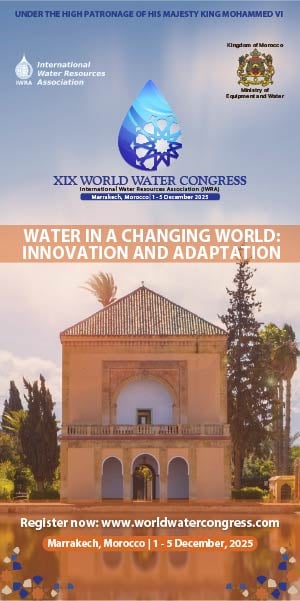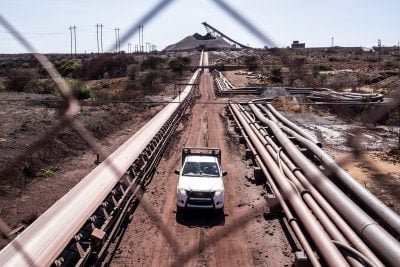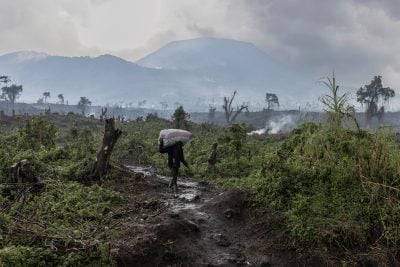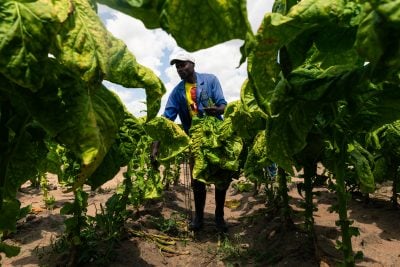Calls have been made for the resignation of the president of the World Bank, David Malpass, following remarks he made at a panel discussion on climate change in New York on 20 September, at the time of the UN General Assembly.
During the discussion, Malpass declined three times to say whether he accepted that man-made greenhouse gas emissions were responsible for global warming. Those calling for his resignation have asserted that being a climate-change denier would be inconsistent with heading a global bank that must not only incorporate climate risk but also – in the wake of various UN climate agreements – actively shift and scale up its portfolio towards climate-friendly projects.
Malpass has since said that he recognises that “greenhouse gas emissions are coming from manmade sources” and that the Bank is “working hard to change that”.
However, his detractors have some valid concerns. The Bank describes its current target for 35% of its financing from 2021-25 to have climate co-benefits as “ambitious”, as it is equivalent to disbursing $50bn of climate finance annually.
Yet while this would indeed make the Bank the largest climate finance lender out of all the multilateral development banks (MDBs), it still leaves it as the largest multilateral lender to non-climate friendly projects. Indeed, as a proportion of lending, the Bank’s target now represents the lowest among the MDBs group.
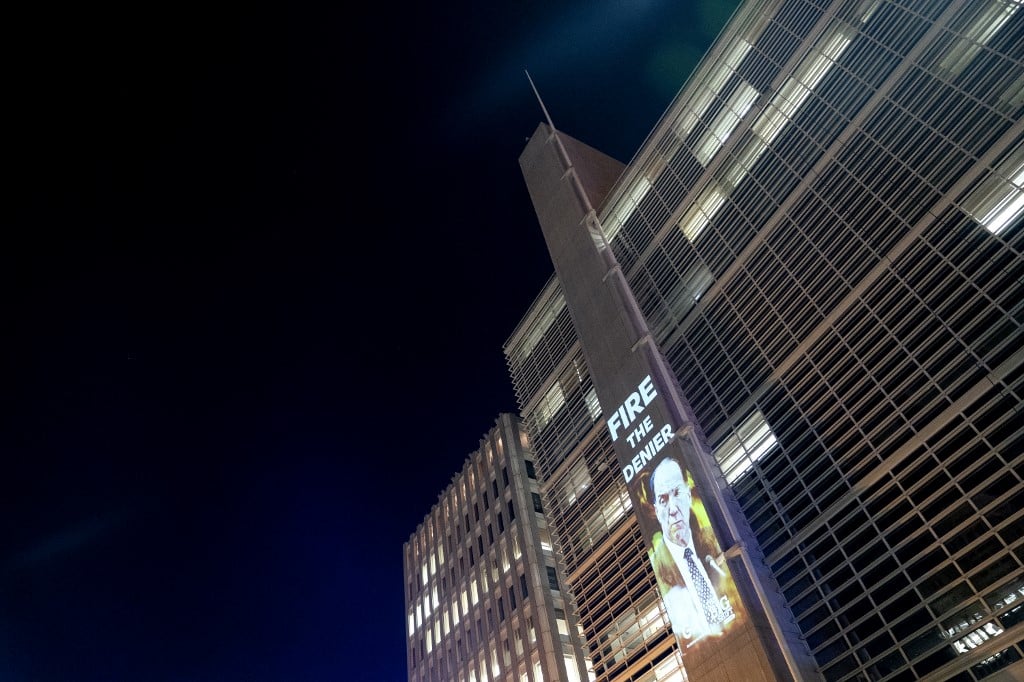
World Bank’s problems run deeper than Malpass’s views
There are many other reasons to be concerned about the Bank’s development perspective, which not only have major implications for African countries, but also run deeper than its current president’s views. Over recent decades, the World Bank has faced four key challenges in addition to climate action:
- First, in July 2022, an independent report commissioned by the G20 concluded that the World Bank – as well as other MDBs – has been too cautious about risk. How? The reports’ authors suggest it is inter alia due to being too close to and focusing too much on what private ratings agencies think. The implication of the report is that it should have been lending more and thus doing more to reduce poverty over years that cannot be reclaimed.
- Second, the World Bank’s Covid-19 response was not only incredibly slow, it was also highly inadequate. To illustrate, the Bank in August 2022 approved a $47m loan to retroactively finance vaccines already procured by South Africa. More importantly, the Bank did not suspend its debt service requirements for any low-and middle-income countries, while bilateral lenders such as China did.
- Third, probably the Bank’s most famous product linked to its advisory services – the “Ease of Doing Business Index” – had to be cancelled in 2021 after revelations that staff had been ordered to manipulate data to inflate the rankings of several countries. However, prior to this, several reports had already suggested significant reforms were needed to the Index to moderate its neoliberal economic leanings, for example by reducing its advocacy of minimal corporate taxation and deregulation.
- Fourth and finally, although branded as an “infrastructure bank” globally, the reality is that the World Bank has been shying away from providing finance for much needed, efficient new infrastructure in African countries for decades. While the Bank continues to provide loans to expand road networks, it has not financed a new rail route since 2002 on the continent, despite requests to do so. It has financed metro systems in Latin America and Asia but African lending has been confined to bus rapid transit systems leaving countries such as Kenya or Senegal to seek support from bilateral donors such as China and France.
Shift in culture is needed
What is the source of these four challenges, as well as the climate action problem? Are they all due to a failure of recent leadership? While these challenges may be exacerbated by the incumbent president’s approach, they are not due to and cannot be turned around just by changing one person.
In the World Bank’s case, the (almost) silver bullet would be a shift in its culture, to escape groupthink, which in turn can only come about through major shifts in its staff diversity from junior to senior levels.
The World Bank is a major employer – in 2021, it employed over 12,500 full-time staff globally, with 55% based in the US headquarters. The Bank has at least four internal targets for ensuring diversity – specifically targets of 50% women in senior management and technical staff; 50% of all staff from low- and middle-income countries; and 12.5% of all staff from the sub-Saharan Africa and Caribbean regions.
However, beyond gender, the Bank’s diversity statistics are quite untransparent. The Bank used to state that its articles preclude it from publishing employment statistics on race. However, more recently it has started to encourage self-reporting by staff. This will likely elicit some interesting findings; in the meantime the Bank proudly notes that it has staff from 180 countries who speak 140 different mother tongues. However, other statistics indicate a less wholesome picture.
- First, the US is by far the largest nationality represented in the Bank. Over 2006-15, 25% of all Bank staff had American passports. However, French and British staff accounted for 8% in total. Only India has similarly large percentages of staff – at 6% over the same period. Yet, of course, we know India accounts for a much larger proportion of the global population, as does China.
- Second, even within the US, the World Bank appears to have challenges in ensuring diversity. In 2009, a study found that out of 1000 American workers at the World Bank, only four were black. That’s despite being based in a city where 45% of the population is black or African American, and a country where 13.6% of the population is black or African American. It is hardly surprising that in August 2020 an internal World Bank survey specifically focusing on race in the light of Black Lives Matter elicited a 70% response, with a third indicating that they had experienced racism.
There are indications this may change. The Bank has appointed a Task Force on Racism, recently published an anti-racism charter and has over 70 other actions planned to improve diversity.
Lack of diversity leads to lazy thinkng
The fact is, given the Bank’s significant role in development, its staff need to fully understand and relate to the contexts they are in. The Bank needs to be an institution that properly responds to poorer countries’ needs, to deal with the complexity of the poverty challenges the world faces today.
A lack of diversity means an inability to challenge simplistic thinking, and high potential for group-think. In an organisation like the Bank this creates the kind of constraints in culture that lead to low risk appetite, lack of innovation in business models, lazy thinking, or a lack of rigour when it comes to climate needs.
Hence, if one third of total World Bank lending goes to African countries, the corollary is that the Bank should be aiming for a higher than 12.5% target for African staff. More Chinese, Emirati, Indonesian, Botswanan and Rwandan staffers need to be in the Bank to be able to infuse its advice with their experience and lessons of poverty reduction, based on different, diverse economic models and frameworks. People from Pacific and Caribbean islands need to be leading the Bank’s work on resilience and disaster management.
Put simply, if the World Bank is to overcome its challenges and be a bank of the future, white staff raised and educated in white-majority countries need to quickly become a minority in it.
Right now, it seems unlikely Malpass can deliver this. But unless a new president dedicates him or herself to ending group-think in the Bank through greater diversity, it seems likely they will face as many challenges, if not more, than Malpass has.
Want to continue reading? Subscribe today.
You've read all your free articles for this month! Subscribe now to enjoy full access to our content.
Digital Monthly
£8.00 / month
Receive full unlimited access to our articles, opinions, podcasts and more.
Digital Yearly
£70.00 / year
Our best value offer - save £26 and gain access to all of our digital content for an entire year!

 Sign in with Google
Sign in with Google 
